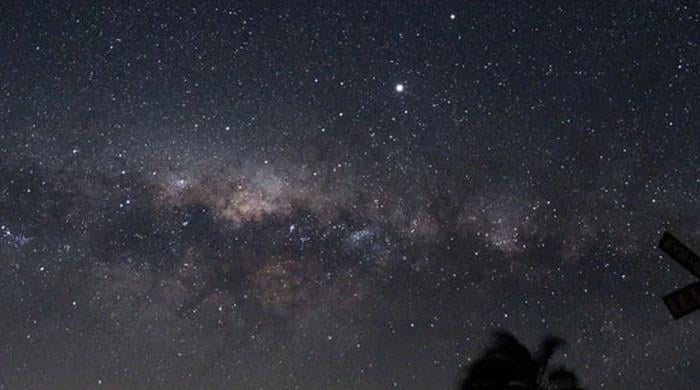At least six planets of the solar system — Venus, Jupiter, Mars, Saturn, Neptune and Uranus — are likely to align in the night sky by the end of January, according to the Space and Upper Atmosphere Research Commission (Suparco).
In a statement, a Suparco spokesperson said people will be able to witness the “spectacular planetary parade” next week.
Venus, Jupiter, Mars, and Saturn would be visible to the naked eye, the spokesperson said, adding that Neptune and Uranus, however, can be seen using a telescope.
In another event, the official said that a “rare seven-planet parade” will begin in late February.
The planets will appear in a straight line from Earth’s perspective, creating a stunning view, the spokesperson added.
“Though millions of miles apart, the planets seem to march together across the heavens,” the Suparco official added.
On the other hand, social media is flooded with posts and videos claiming that the upcoming planetary alignment on January 25 happens “once in 396 billion years”.
However, planetary alignments are not something out of the ordinary, nor are they irregular or a weird phenomenon; but are indeed a spectacular sight, according to Forbes.
Here is what to know about the famous “planet parade” and how can one see it.
What is a planet parade?
Planet parade is a term commonly used by people when there are more than a few planets to be seen in the night sky.
It is also often said that planets like Uranus and Neptune, which are too small to be seen by the naked eye, are visible at the time of the parade.
So why is the term still used? This is mainly due to Jupiter remaining bright in the sky, while Venus and Mars will be at their brightest in the post-sunset sky for the next couple of years.
With Saturn still visible and Mercury still appearing, four or five planets in the solar system can be seen with the naked eye.
Why is the parade not an alignment?
Planets are always aligned with each other. The solar system is made as such that planets are not racing all over as they orbit the sun. They revolve around the Sun in near circles. This debunks the “once in 396 billion years planetary alignment” claim.
All planets in the solar system can be seen in a line in the night sky. It is easy to spot them as it’s also the sun’s path through the daytime sky. The phenomenon is called the ecliptic because it is the plane along which both the Moon and the Sun appear to move across the sky, and this alignment causes occasional eclipses.
The visibility of the number of planets depends on where they are in their journeys around the Sun. Some will appear closer to the sun but they are lost in the glare. Others are visible at night from Earth due to them being furthest from the sun.


